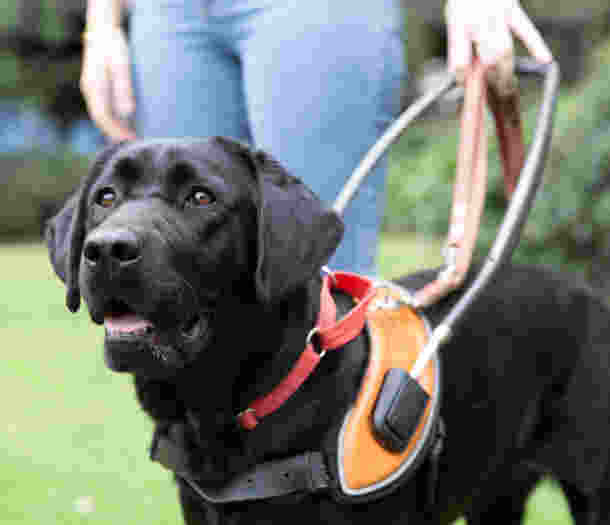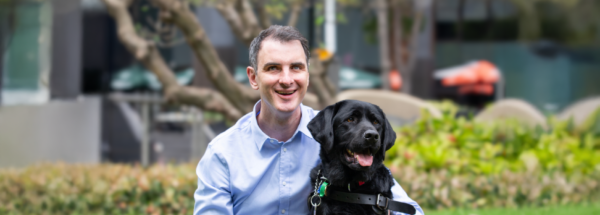They’re no ordinary dogs
Guide Dog Access and Etiquette
They’re no ordinary dogs
Did you know that by law Guide Dogs can go anywhere their handlers go?
This means that Guide Dogs can go to cafés, restaurants, shops, supermarkets, hotels, sporting and cultural events, and even catch public transport and taxis.
It’s important to remember that if a Guide Dog is refused entry somewhere, so is their handler. Refusing entry is a form of disability discrimination and it is against the law.
Why can Guide Dogs go anywhere?*
When a Guide Dog is in a coat or a harness, it is working to assist its blind or vision impaired handler to move around safely. Guide Dogs and their handlers are allowed to go anywhere legally under the Guide Hearing and Assistance Dog Act 2009.
A Guide Dog is trained from a young age and undergoes extensive training to learn how to behave in public areas. They learn how to help their handler get on and off modes of public transport safely and they learn how to behave in public spaces. For example, when a Guide Dog and its handler go to a restaurant or café, the dog is taught to sit under the chair or table so it will not be in the way of patrons or staff.
To find out more about Guide Dog Access Rights, click here to read the Queensland Government Guide, Hearing and Assistance dogs Act.
How can I help?
The best way you can help our incredible Guide Dogs and the people they assist is by making others aware that Guide Dogs can go anywhere.
As a part of Guide Dog etiquette, it’s also important to remember these handy tips:
- The Guide Dog isn’t the centre of attention. Please speak directly to the person and not to their Guide Dog.
- Never feed, pat or distract a Guide Dog when they are in coat or harness.
- Don’t grab the person or Guide Dog to help them, always ask if they need assistance first.
- If you are providing guiding assistance, please walk on the person’s side which is opposite to the Guide Dog.
- Ensure high traffic areas like pathways and entrances are free of obstacles and spills so that Guide Dog teams can navigate safely.
If you are a pet owner:
- Keep your pet dog on a leash when you are in a public space.
- If you see a loose dog, please alert your local council.
- If you see a working Guide Dog team, please give them space.
- If you are approaching a Guide Dog team with your dog, please clearly introduce yourself to the person and say you have a dog with you.
For further information about the legal rights of Guide Dogs and their handlers or Guide Dog access and etiquette, contact us.
*Places a certified dog cannot go
Places where a certified dog cannot go include:
- certain parts of a health service facility (e.g. hospital, medical centre), namely:
- an in-patient ward
- a labour ward
- a procedure room
- a recovery area
- areas where standards of hygiene are maintained at a significantly high level for preventing infection or the spread of disease
- areas where presence of the dog would affect the safe and effective delivery of health services.
- an ambulance
- a part of a public place or public passenger vehicle where food is normally prepared
- where the presence of the dog would present a risk to the health or welfare of people ordinarily at the place or on the vehicle.
-
quarantine animal areas, for example Dreamworld’s Tiger Island
Ready to continue?
Seems like you have filled this form earlier. Let’s pick up where you left off.

